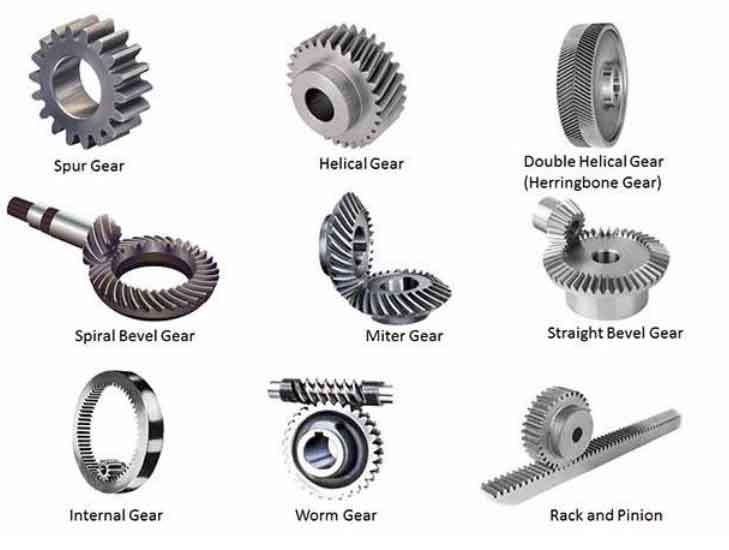Spur gears and miter gears are both common types of gears used in various mechanical systems. While they have some similarities, they also have distinct characteristics that make them suitable for different applications. Let’s compare spur gears and miter gears in terms of their design, functionality, advantages, and applications.

- Design:
- Spur gears: Spur gears are cylindrical gears with teeth that are straight and parallel to the gear’s axis. They are mounted on parallel shafts and transmit power between parallel axes. The teeth of spur gears mesh in a straight line.
- Miter gears: Miter gears, also known as bevel gears, are conical gears with teeth that are cut on a non-parallel axis. They are designed to transmit power between intersecting or non-parallel shafts. The teeth of miter gears mesh at an angle.
- Functionality:
- Spur gears: Spur gears are known for their simplicity and efficiency. They provide high gear ratios and are used to transmit power between parallel shafts. They are primarily used for speed reduction or torque amplification.
- Miter gears: Miter gears are used when the direction of rotation needs to be changed, or power needs to be transmitted between intersecting or non-parallel shafts. They can transmit power at various angles and are often used to change the axis of rotation by 90 degrees.
- Advantages:
- Spur gears:
- Simplicity: Spur gears have a simple and straightforward design, making them easy to manufacture and maintain.
- Efficiency: Due to their straight teeth, spur gears have high efficiency and low power loss.
- Cost-effective: Spur gears are generally less expensive to produce compared to miter gears.
- Miter gears:
- Versatility: Miter gears can transmit power at different angles, making them suitable for applications where the direction of rotation needs to be changed or non-parallel shafts need to be connected.
- Compactness: Miter gears can transmit power at right angles, allowing for compact designs in machinery and equipment.
- Smooth operation: Miter gears provide smoother operation compared to spur gears, especially at high speeds.
- Spur gears:
- Applications:
- Spur gears:
- Automotive transmissions
- Industrial machinery
- Conveyor systems
- Robotics
- Miter gears:
- Power tools
- Printing presses
- Paper shredders
- Hand drills
- Differential mechanisms
- Spur gears:
It’s important to note that the selection between spur gears and miter gears depends on the specific requirements of the application, such as the desired gear ratio, space limitations, and the need to change the direction of rotation or connect non-parallel shafts. Both gear types have their own advantages and are commonly used in various mechanical systems to meet specific design needs.
